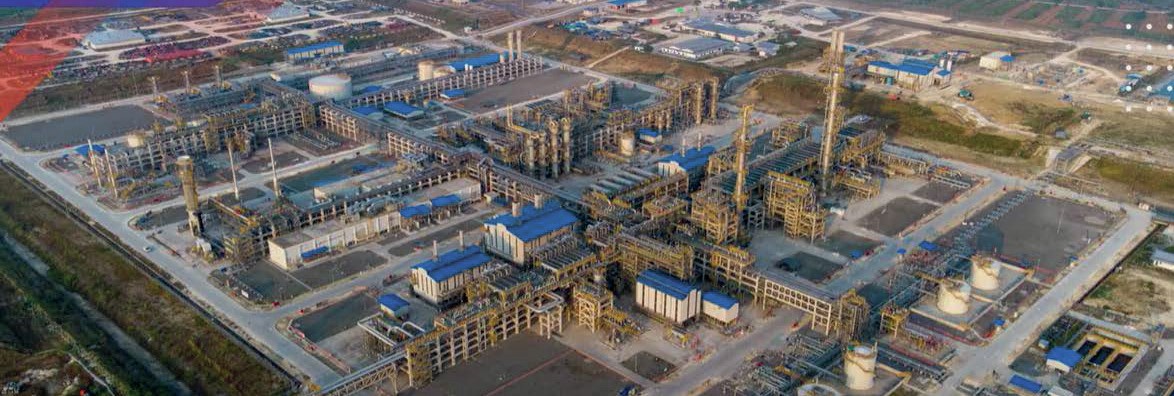Sulphur 403 Nov-Dec 2022

30 November 2022
Transporting sulphur safely
TRANSPORT
Transporting sulphur safely
Sulphur is a relatively safe and inert solid. However, it has a number of unique physical and chemical properties which can give rise to hazards, particularly during transport and handling.

Sulphur falls under the UN RID dangerous goods code 4.1, classing it as a flammable substance. Sulphur burns readily and generates toxic sulphur dioxide when doing so. Normal fire prevention steps must thus be taken, such as forbidding naked flames around sulphur, and the restriction of cutting or welding equipment during normal operation. Electrical wiring and equipment must be properly protected and checked regularly.
Dust is the major hazard for handling dry sulphur. Solid sulphur is brittle and friable and can readily break down into smaller particles. Most organic dusts are combustible to a greater or lesser extent, but sulphur dust has a low ignition temperature of around 190°C or higher. It is also an excellent insulator, meaning that it can build up a static charge, and discharges can consequently cause ignition. In order to prevent sulphur dust explosions there are two basic strategies; to avoid suspensions of dust in the air, and to exclude sources of ignition.
Crushed bulk sulphur is the form most given to dust formation, so sulphur is usually formed into pastilles, granules etc, but these can also give rise to dust if poorly handled (see, e.g. ‘Airborne sulphur particulate in formed sulphur handling’, Sept/Oct 2015). Handling methods should therefore minimise dust formation by reducing the number of transfer points on conveyors to a minimum, using rubber belts conveyors or bucket elevators, properly earthed and minimising the use of front end loaders, which can crush sulphur under their wheels.
Good housekeeping is also a must. Operators need to develop and implement a hazardous dust inspection regime, with inspection of and cleaning of dust residues at regular intervals. Dust can also be suppressed by use of water sprays at transfer points and load-out stations. However, the effectiveness of water alone for dust control is limited by the hydrophobic nature of sulphur. This can be overcome by the use of special water-based chemical surfactants, provided that they are not used to excess.
Liquid sulphur
Sulphur is often transported as a liquid by rail and ship. By rail it is carried in insulated stainless steel tank cars which keep the sulphur at a temperature of 140°C. The Sulphur Institute has issued several sets of guidelines on sulphur rail cars, including a Molten Sulphur Rail Tank Car Guidance Document; Molten Sulphur Rail Tank Car Loading and Unloading Operations; and Guidelines on the Transportation Regulation of Molten Sulphur.
Liquid sulphur poses the greatest potential hazard during transfer. To avoid the possibility of an explosive concentration of sulphur vapour occurring, the temperature of liquid sulphur should not be allowed to exceed 154°C. The temperature however must also be maintained above 112°C to prevent the accumulation of solid sulphur crystals on internal tank surfaces exposed to air. Any sulphur deposits are corrosive to steel in the presence of moisture. As with solid sulphur, static charge build-up must be avoided.
Emissions
The other major hazard from both solid and liquid sulphur, is gaseous emissions, in particular, hydrogen sulphide. Direct from the Claus plant, sulphur typically contains around 300 ppmw H2 S which can be released during storage and/or transport, creating potentially hazardous conditions. Degassing the sulphur to reduce the H2 S content considerably reduces the potential hazards. In North America, sulphur degassing to <10 ppmw H2 S is regarded as best practice. All areas in which sulphur is stowed or used or which require the presence of personnel should be thoroughly ventilated.
Sea transport
The major issue for sea transport is corrosion. Dry bulk sulphur is not corrosive, but in the presence of water, sulphur can react with other elements. Sulphur is often loaded with a light water spray to keep down dust, or may otherwise be wet from rain when exposed in dockside storage. In a ship’s hold, water in the sulphur cargo can settle to the bottom or into the bilges, added to by any seawater that is able to enter the hold due to improperly tightened hatches. There are two processes in particular which can be problematic. The first is acidic corrosion, where sulphur-oxidising bacteria (thiobacilli) directly oxidise the sulphur to sulphate, and generate sulphuric acid. The acid can then react with iron in the steel of the hold. The presence of chlorides – in the form of salts, such as sodium and potassium chlorides, such as are found in seawater – accelerates this reaction.
A more serious mechanism is electrochemical corrosion of iron by wet sulphur, which can auto-catalyse under anaerobic conditions to produce ferrous sulphide (FeS). This is a blackish-brown sludge or jelly which can display pyrophoric behaviour – when exposed to oxygen, such as during discharge of the hold, it can create sufficient exothermal heat to start a fire.
When carrying sulphur cargoes, it is therefore essential that the hold be properly prepared. All residues from previous cargoes, as well as loose paint, rust or scale, should be removed. As holds are often cleaned with seawater, chlorides should also be removed, preferably by washing with fresh water to a ‘grain clear’ standard – i.e. as clean as would be required for transporting grain. Holds must be inspected and approved and hatches must be watertight. A lime wash is also generally applied to act as a barrier and protect the steel by neutralising acid formation.





